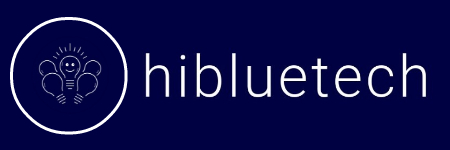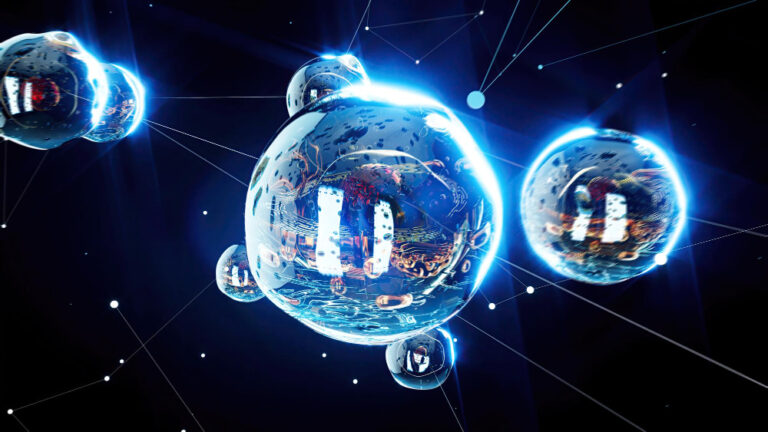Understanding Web 3.0: The internet is entering a new phase: Web 3.0. Unlike previous eras Web 1.0 and Web 2. 0, this next evolution focuses on returning control to users through decentralization, transparency, and digital ownership.
As concerns around privacy, data misuse, and platform dominance grow, Web 3.0 offers a solution: an internet where individuals, not corporations, manage their identities, assets, and online experiences.
In this article, you’ll learn what Web 3.0 is, how it differs from earlier web versions, and why it matters. We’ll break down the core technologies, real-world applications, and challenges, offering a clear, current, and human-first perspective on the future of the internet.
Table of Contents
What is Web 3.0?
Web 3.0 is the next generation of the internet focused on decentralization, user ownership, and trustless systems giving individuals control over their data, identity, and assets.
Unlike what many assume, it’s not just about cryptocurrency or blockchain. Web 3.0 is built on the idea of a trustless, peer-to-peer internet, where users interact directly through smart contracts and decentralized applications (dApps), without needing a middleman.
The shift is philosophical as much as technological. It’s about designing systems where users own their data, creators retain control over their content, and digital identity isn’t tied to one platform. Power is moving from centralized platforms to individuals, transforming how we connect, create, and exchange value online.
This is what makes Web 3.0 technologies more than a trend; they represent a fundamental change in how the web operates and who it serves.
The Internet’s Evolution: Web 1.0 → 2.0 → 3.0
To understand Web 3.0, it helps to see how we got here:
- Web 1.0 (1990s–early 2000s): Static websites. Information was read-only. No interaction. Think of personal blogs and early directories.
- Web 2.0 (2004–present): The rise of social media, apps, and user-generated content. Users could create and share but platforms controlled the data.
Web 3.0 is the response to Web 2.0’s flaws. Centralized platforms monetize user data, algorithms decide what we see, and privacy is often compromised. Web 3.0 shifts away from this by offering a user-first, decentralized model where privacy, ownership, and transparency are built in.
Comparison:
| Feature | Web 1.0 | Web 2.0 | Web 3.0 |
| Interaction | Read-only | Read/write | Read/write/own |
| Ownership | None | Platform-owned | User-owned (data/assets) |
| Control | Centralized | Centralized | Decentralized |
| Revenue | Ads (limited) | Platform-driven | Community-driven (tokens) |
This evolution isn’t just technical, it’s about empowering users in ways we’ve never seen before online.
Core Technologies Behind Web 3.0
Web 3.0 is powered by decentralized technologies like blockchain, smart contracts, tokens, and peer-to-peer storage, enabling security, transparency, and user control. Here’s a total break down:
Blockchain: The Foundation of Trust
Blockchain is the decentralized ledger that records transactions transparently and immutably. Instead of a single authority verifying actions, the network reaches consensus, meaning no one can alter data behind closed doors. It’s the trust layer that replaces middlemen with math.
Smart Contracts: Code That Executes Autonomously
Smart contracts are self-executing agreements built on the blockchain. They automatically carry out rules, like sending payment when a task is done, without lawyers, banks, or apps in between. Think of them as logic without loopholes.
Tokens: More Than Digital Money
In Web 3.0, tokens aren’t just about cryptocurrency. They grant access (like logins), governance rights (in DAOs), and even represent ownership of real-world or digital assets. This is the core of the token economy, where users hold value, not just use the platform.
IPFS & Decentralized Storage: Owning Your Data
The InterPlanetary File System (IPFS) and similar tools store files across a peer-to-peer network, not centralized servers. This means content can’t be quietly removed, altered, or censored; you truly own what you publish.
Zero-Knowledge Proofs: Privacy Without Compromise
Zero-knowledge proofs (ZKPs) let someone verify information, like age or credentials, without revealing the actual data. It’s a game-changer for privacy, giving users control without sacrificing functionality.
Together, these tools form the technical backbone of a user-centric internet, where transparency, security, and ownership aren’t features; they’re defaults.
How Web 3.0 Changes Digital Life
Web 3.0 changes how we manage identity, money, content, and online interaction. Shifting control from platforms to people.
1. Identity: You Own Your Login
Forget passwords tied to Google or Facebook. In Web 3.0, digital identity is self-sovereign. You connect through crypto wallets like MetaMask or Phantom, no centralized login needed, and you control the keys. Your identity moves with you, across apps and platforms.
2. Content Ownership: You Control What You Create
With NFTs and tokenized access, creators can sell or license digital art, music, and writing without giving platforms a cut. Ownership is baked into the blockchain, giving artists and users new ways to monetize and manage rights, no middlemen, no hidden fees.
3. Finance: Peer-to-Peer and Borderless
Decentralized Finance (DeFi) lets users lend, borrow, and earn yield without banks. Platforms like Aave or Uniswap offer high interest rates, instant transfers, and full transparency. You don’t need permission, just a wallet and internet connection.
4. Governance: The Rise of DAOs
DAOs (Decentralized Autonomous Organizations) are communities that run on smart contracts and votes, not CEOs or boards. Members hold governance tokens, propose ideas, and vote on changes, everything is transparent and community-led.
5. Social Media: You Own the Platform
Web 3.0 social platforms like Lens Protocol and Farcaster let users own their posts, followers, and data. If you switch apps, your audience moves with you. Your content isn’t locked in, censored, or monetized without your consent.
Examples
- NBA Top Shot turned highlight clips into NFT collectibles, creating a new revenue stream for sports fans and leagues.
- Mirror.xyz empowers writers to tokenize blog posts and earn directly from readers, no ads, no platform fees.
- Gitcoin funds open-source projects using community voting and matching grants, proof that Web 3.0 can support real innovation.
In short, Web 3.0 gives you more control, more opportunity, and more ownership, all built into the foundation of the new internet.
Challenges Facing Web 3.0
While Web 3.0 offers new freedoms, it faces major obstacles like poor usability, security risks, unclear regulation, and scalability issues. Bellow is a total breakdown:
1. Usability: Not Yet Built for Everyone
Setting up a crypto wallet, managing seed phrases, and paying unpredictable gas fees can be overwhelming for average users. Onboarding needs to become as seamless as logging in with an email. Until then, many people will stay on the sidelines.
Without intuitive design, decentralization stays niche.”
Linda Xie, Co-founder, Scalar Capital
2. Security: You’re Fully in Charge
Web 3.0 puts you in control, but also at risk. Self-custody means no password recovery if you lose your keys. Phishing scams, contract bugs, and wallet exploits are real concerns. Education and better safety nets are essential.
3. Regulation: A Legal Gray Zone
Crypto, DeFi, and NFTs face different rules across countries. Some governments embrace them, others restrict or ban them. The lack of unified regulation makes it hard for projects to scale legally and for users to trust what’s safe.
4. Scalability & Environmental Impact
Many blockchain networks still struggle with speed and cost, especially during high traffic. While Ethereum is moving toward eco-friendly proof-of-stake, energy usage and transaction throughput remain major bottlenecks for global adoption.
Despite these hurdles, innovation is rapid. Solutions like layer-2 scaling, account abstraction, and regulatory sandboxes are helping close the gap between potential and reality.
Are We There Yet? Web 3.0 Today vs. Tomorrow
Web 3.0 is in early stages used by millions, but still not mainstream. Simpler interfaces and regulations are needed for mass adoption.
Millions now use wallets like MetaMask, apps like OpenSea, and platforms like Arbitrum. However, the majority of internet users haven’t touched a Web 3.0 application yet.
Big tech is paying attention:
- Reddit launched NFT avatars and blockchain-based community points.
- Meta (Facebook) is experimenting with digital ownership and the metaverse.
- PayPal supports crypto transactions, signaling fintech’s shift toward decentralization.
These aren’t full transformations, but clear signs that Web 3.0 is influencing Web 2.0.
What’s Missing?
For real maturity, Web 3.0 needs:
- Simpler interfaces that hide blockchain complexity.
- Clear regulations that protect users without stifling innovation.
- Interoperability between platforms, so users aren’t locked into silos.
Over the next 3–5 years, expect to see hybrid platforms, growing creator economies, and mainstream businesses embracing decentralized infrastructure behind the scenes.
Web 3.0 isn’t just coming; it’s being built in real time.
Conclusion
Web 3.0 marks a quiet revolution. It flips the script, from an internet owned by corporations to one where individuals hold the keys. Control over data, identity, and value is shifting, not through hype, but through code, communities, and new tools.
This isn’t about abandoning what works. It’s about rebuilding trust in how we connect, create, and transact online.
Web3 isn’t perfect. It’s early. It’s clunky in parts. But it’s also open, evolving, and driven by people, not platforms. Whether you’re a creator, a developer, or just curious, now’s a good time to explore. Try a decentralized app. Join a DAO. Learn how wallets work.
Web 3.0 isn’t the final version of the internet; it’s a new chapter. One that invites participation, not just passive use. Stay informed. Stay critical. But most of all, stay involved.
The future is being written, this time, with all of us holding the pen.
What makes Web 3.0 different from Web 2.0?
Web 2.0 relies on centralized platforms that control user data. Web 3.0 shifts control to users through decentralization, allowing you to own your data, identity, and assets.
Is Web 3.0 crypto?
Not entirely. Crypto is a part of Web 3.0, but the bigger idea is user ownership, decentralized apps, and trustless systems; crypto is just the fuel.
Can I make money from Web 3.0 safely?
Yes, through DeFi, NFTs, DAOs, and staking, but do your research. Web3 is risky if you’re careless. Use secure wallets and trusted platforms.
How can I start exploring Web 3.0 today?
Get a wallet like MetaMask, try a dApp, mint an NFT, or join a DAO. Start small, learn as you go, and stay cautious with any investments.

